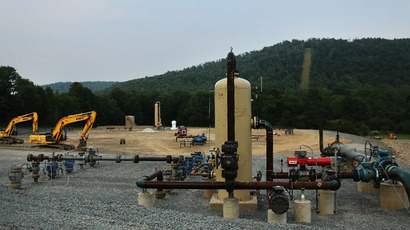Cape Cod town residents claim to be hit by ‘wind turbine syndrome’

Numerous residents in Falmouth, MA are reporting health issues allegedly caused by an unconventional source: their town’s three wind turbines.
Ranging from headaches and ringing in the ears to dizziness and heart palpitations, dozens of residents in this small Cape Cod town have filed lawsuits claiming that three wind turbines constructed in 2010 are responsible for a plethora of ailments.
At the center of the dispute is whether or not residents could be suffering from “wind turbine syndrome,” a condition not recognized by the Centers for Disease Controls and Prevention but that some claim causes various ailments to people in close proximity to wind turbines.
During interviews with ABC News, a local bridal florist named Sue Hobart said that noise from the turbines had caused headaches, insomnia and dizziness to the point where she fell down on her driveway. The symptoms became so unbearable she and her husband were forced leave their home and move into a neighboring town called Bourne. Whenever Hobart is away from Falmouth, her ailments cease.
Another couple, Neil and Betsy Anderson, reported various symptoms that began within two weeks of the construction of Falmouth’s two town-owned turbines. They included shortness of breath, headaches, heart palpitations, and sensitivity to sound.
"First, it was pressure in my ears -- they were just popping as I was standing out in the front yard doing landscaping," Anderson said. "Within two months, my ears started ringing with tinnitus, and now I have clenching of my teeth -- bruxism."
"At times, I even have confusion over what is the pulse of the turbine and which is my heartbeat.”
The town’s board said that infrasound, or sounds with frequencies below 20 Hz, could be to blame. These types of frequencies are not often audible by humans, but can sometimes be detected.
Some researchers have cast doubt on “wind turbine syndrome,” however, noting that one 2013 study showed the power of suggestion could cause health problems. Others cited the “nocebo” effect, which, unlike a placebo, can persuade people to think that something is actively hurting them.
"What can happen across time is people think maybe this is real, my neighbor's got it," said Dr. Elizabeth Bowman, a psychiatrist and adjunct professor at Indiana University. "They start to tune in more to their bodies and amplify and misinterpret normal body sensations."
The latest findings by the Massachusetts Departments of Environmental Protection and Public Health also found that turbines can only be found to be responsible for “annoyance,” not health issues.
Still others, like the doctor who diagnosed Sue Hobart, said that we don’t know enough to rule out infrasound as a possibility, or to dismiss “wind turbine syndrome” as a real condition.
More than 45 Falmouth residents have complained about the turbines, and numerous lawsuits have been filed.
Democratic State Rep. Brian Mannal, who is representing the Hobarts in their lawsuit against the town and Notus Energy Company, which owns one of the turbines, said that the couple is pursuing between between $150,000 and $300,000 in damages for medical bills as well as for their home’s loss in value.
"This is an industry that has pushed to make wind happen, and I am not against that, but you do it responsibly," Mannal said to ABC. "It goes all day and night. My initial take was that [Hobart] was being a hypochondriac, but I went to their house two years ago with a little skepticism and within 10 minutes of being in the house, I could feel it and hear it. ... It acts like a drum and pounds on the house."
While Falmouth officials will not comment on the litigation, Michael J. O’Neill, the attorney for Dan Webb, owner of Notus Energy, said the Hobarts’ claims are groundless. Notus’ desire to construct its turbine was “subject to vigorous review,” he added, and said in a court filing that "Scientific research and studies have shown that wind turbines such as Notus' do not cause a nuisance or adverse health effects."
Webb, meanwhile, defended the placement of his company’s turbine and added that it creates about 5 million kWh of energy every year.
"The nearest home to the Notus turbine is approximately 1,700 feet from the turbine,” Webb wrote in a statement. “The minimum setback distance recommended by a state model bylaw is three times tip height, or a distance of 1,197 feet. So our setback distance to homes is substantially greater than specified in the state model bylaw."














